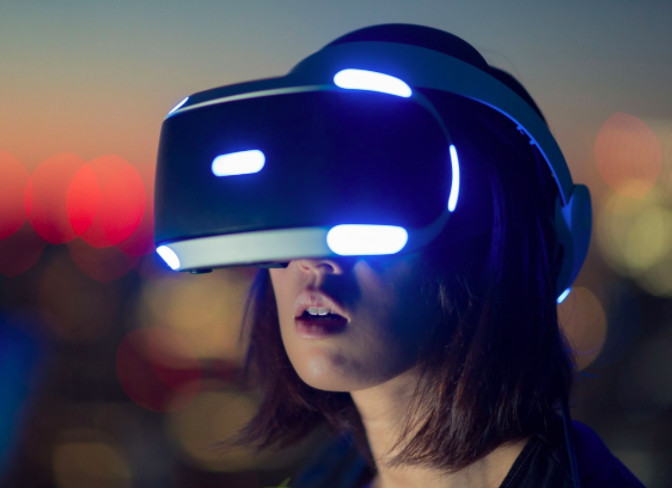7 Ways Virtual Reality Can Improve Our Society
Virtual reality (VR) is gaining traction as an innovative tool that may help enterprises promote goods and services in a new and exciting fashion. Businesses, nonprofit organizations and government agencies are evaluating the technology as a way to immerse consumers, learners and personnel in custom-made environments. Researchers have developed the framework for VR over the last 7 decades. Government entities have used VR to train personnel and complement space exploration for several years. However, widespread interest among consumers has only taken hold relatively recently with the introduction of consumer products, such as Facebook’s Oculus Rift, HTC’s Vive and Samsung’s Gear VR.
Augmented reality (AR) is a technology that combines real-world images with VR. Together, the combined markets for AR and VR technologies is forecast to climb to $162 billion in revenue by 2020. The following 7 passages reveal and hypothesize how enterprises might use virtual reality to improve consumer experiences.
Improvement 1: Crowdfunding for Social Good
Forbes defines crowdfunding as an Internet-based funding initiative that gathers proceeds in small amounts from a large group of individuals. The outlet is growing in popularity rapidly. In 2010, organizations successfully raised $880 million in crowdfunded revenue, and that amount skyrocketed to $16 billion by 2014. Enterprises that seek crowdfunding are using VR to showcase community projects. For instance, the organizations might host virtual trips, so that stakeholders can experience how a finished community project will appear. The organizations use the VR excursions to improve fundraising efforts.
Improvement 2: Training Teams for Public Safety
The military as well as agencies charged with responding to emergency situations have conducted research involving what makes individuals panic under stress and, as a result, have developed training simulations that reinforce the concept of psychological self-awareness.
The 911 emergency exchange receives more than 240 million calls annually. VR technology serves as a mission critical tool for improving the ability of emergency responders to function effectively in highly stressful situations. These organizations now use virtual reality as a training resource for personnel that respond and work in demanding environments.
Improvement 3: Refining Healthcare Services with Virtual Reality
Surgery is a challenging, high-risk activity. To mitigate patient risk, care providers are learning to prepare for surgery using virtual reality. Medical virtual reality firm Surgical Theater has developed a technology that incorporates MRI scans and 3D modeling to create detailed images of human skulls. Surgeons use the technology for safe exploration of patient brains and preparing strategies to enter, repair and exit damaged regions.
Improvement 4: VR as a Powerful Tool for Self-Improvement
The Oculus Rift is a leading VR hardware component that sells at a price point that is within the grasp of devoted gaming fans. Gaming firms take in twice the revenue of the movie industry, earning $80 billion annually. In recent years, gaming and virtual reality have started to affect the behavior of consumers. While research frequently reports that mainstream gaming encourages violent behavior, scientists are developing VR applications that will promote positive behavior among consumers.
Improvement 5: Enhancing Behavioral Health Treatment
As an innovation that engages consumer senses at a level that eclipses other technologies, virtual reality is a boon to psychologists. Care providers have used VR to aid behavioral health patients since the 1990’s. The technology has proven invaluable for aiding veterans diagnosed with post-traumatic stress syndrome (PTSD). Psychologists use the technology to immerse patients in the environment that induced their trauma, helping them confront and eventually overcome their condition.
Improvement 6: Educating Students Using VR
In Pennsylvania, high school students use the HTC Vive virtual reality device to develop and design projects. According to teacher Tony O’Neal of Milton Hershey High School, VR technology allows students to rapidly build prototypes and designs compared to slow process of using manual sketches.
Students also use virtual reality technology for geographical exploration. Using Google Expeditions, a VR teaching tool, students can explore places that aren’t practical to visit in real-life, such as the ocean floor and the moon.
Improvement 7: Improving Commerce with Virtual Reality
The Cave Automatic Virtual Environment (CAVE) may prove invaluable for business enterprises, especially firms that work with hazardous materials or products. Virtual reality has reached an iteration that visually parallels the real world. Firms can now use the technology to realistically simulate work conditions without placing employees at risk.
The phenomenal impact of virtual reality is not limited to these examples, and researchers continue to develop new ways to use the technology for serving the public’s interests. VR technology has grown far beyond the realm of entertainment, and the bright, talented engineers of tomorrow will pave the way for a virtual world that will serve countless social needs.
You’ve probably heard about augmented reality, but what you may NOT know is how much it’s changing the industry. Augmented reality, or AR, is the cousin of virtual reality. What AR does is take elements of the virtual world and bring them into your real world, enhancing the things you see, hear, and feel. The technical definition of augmented reality is, “An enhanced version of reality where live direct or indirect views of real-world physical environments are augmented with superimposed computer-generated images over a user’s view of the real-world, thus enhancing one’s current perception of reality. In other words, you look at a scene through a screen and experience computer-generated images, sounds, and even touch feedback placed within the real world.

